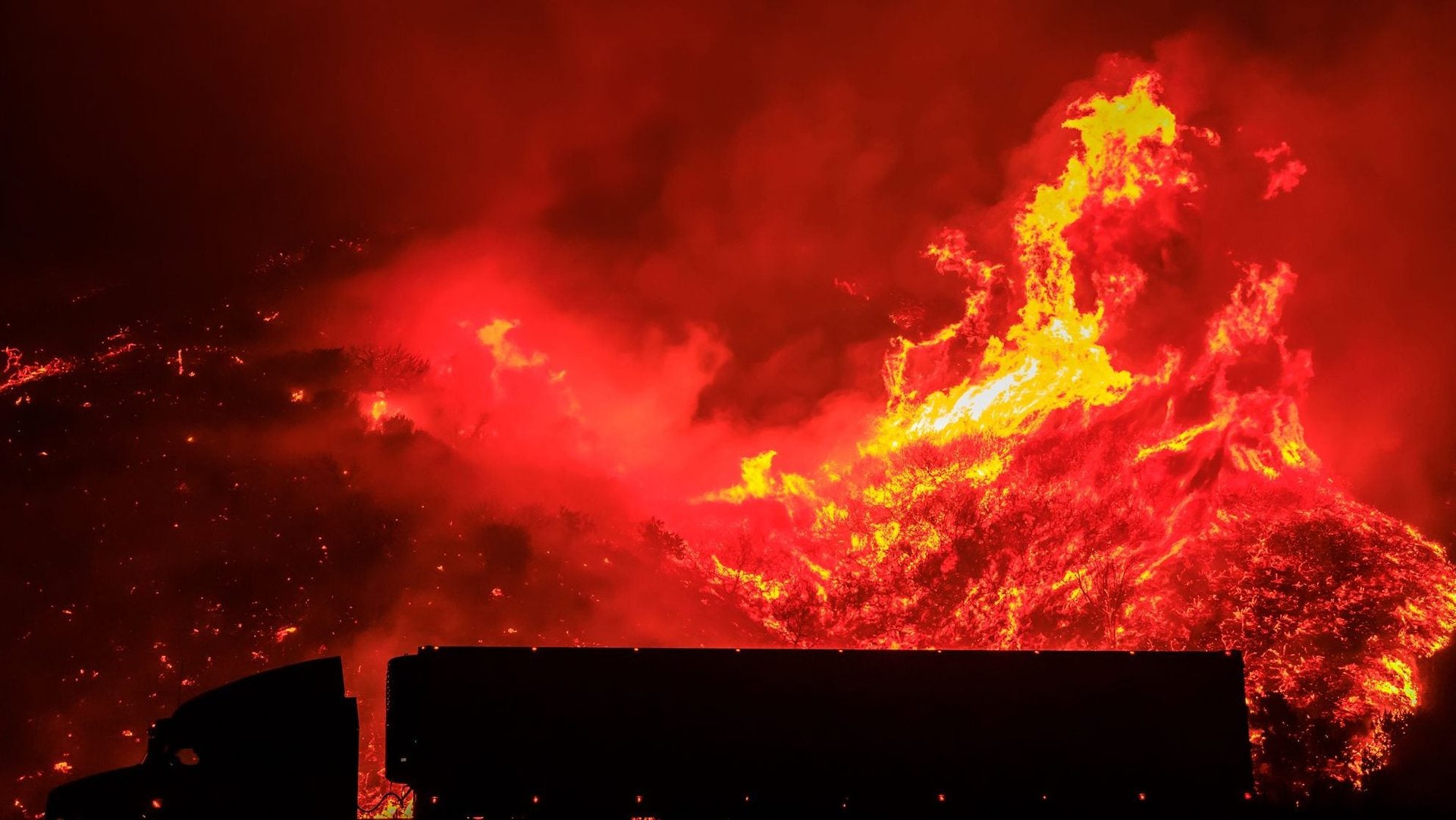Scientists say a new climate trend makes perfect wildfire conditions more common
Sixteen wildfires are burning in California right now. One is so ferocious that it has killed eight people. In the state, no month has passed without a wildfire since 2012, “a stark contrast to previous decades, when fire officials saw the fall and winter as a time to plan and regroup,” according to the New York Times (paywall).


Sixteen wildfires are burning in California right now. One is so ferocious that it has killed eight people. In the state, no month has passed without a wildfire since 2012, “a stark contrast to previous decades, when fire officials saw the fall and winter as a time to plan and regroup,” according to the New York Times (paywall).
The phenomena of increasingly regular (and increasingly devastating) wildfires is by no means confined to California. As Greece battles enormous deadly blazes, and places above the Arctic circle like northern Sweden are gripped by a combination of heatwave and wildfire, scientists are warning this may be the new normal.
A paper published Wednesday (August 1) in the journal Science Advances found that places experiencing drought have warmed faster than the planet as a whole. This amplified warming means heatwaves and droughts are happening at the same time more often—setting up the perfect conditions for wildfire.
The researchers note that the phenomenon is likely driven by a feedback loop, where climate change-accelerated warming over land has no chance to dissipate—and is rather amplified—because there is little-to-no moisture in the soil during a drought. When there is moisture in the ground, some surface heat can be dissipated through evaporation, sort of like the way the human body cools itself through the evaporation of sweat on the skin. But when there isn’t moisture, the heat has nowhere to go. The drought conditions thus turn hotter temperatures into full-blown heatwaves.
That, of course, creates a tinderbox: “We expect the concurrence of droughts and warm events to physically manifest in more frequent wildfires, reduced air quality, and stressed agricultural crops and livestock,” the researchers wrote.
Amir AghaKouchak, a University of California-Irvine professor who co-authored the study, warned that the upward trend in the number and intensity of wildfires will likely continue, due to a combination of worsening climate change and population growth.
“We need to bolster our resiliency against these threats to protect our population health, food supply, and critical infrastructure,” he said in a statement.